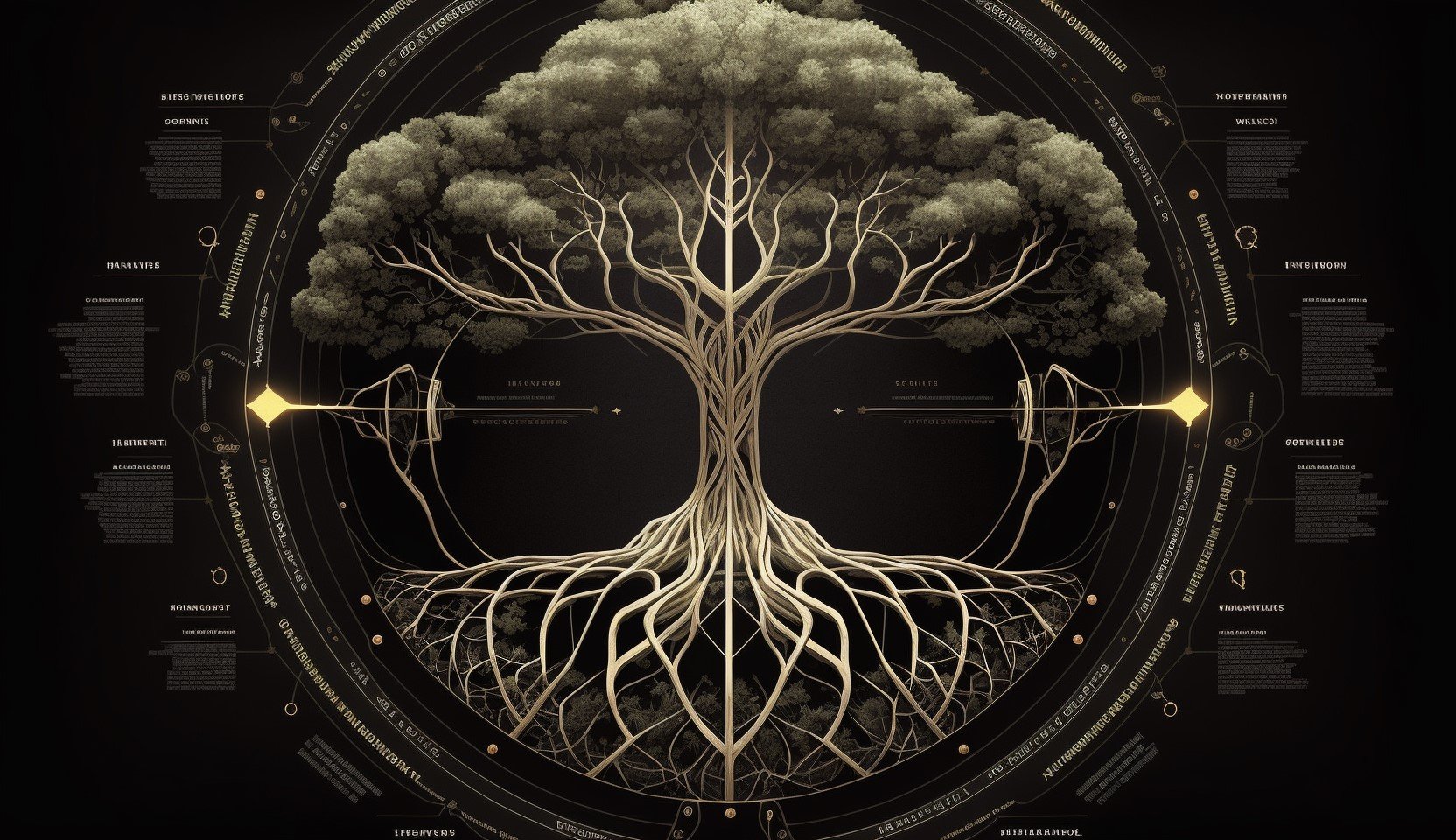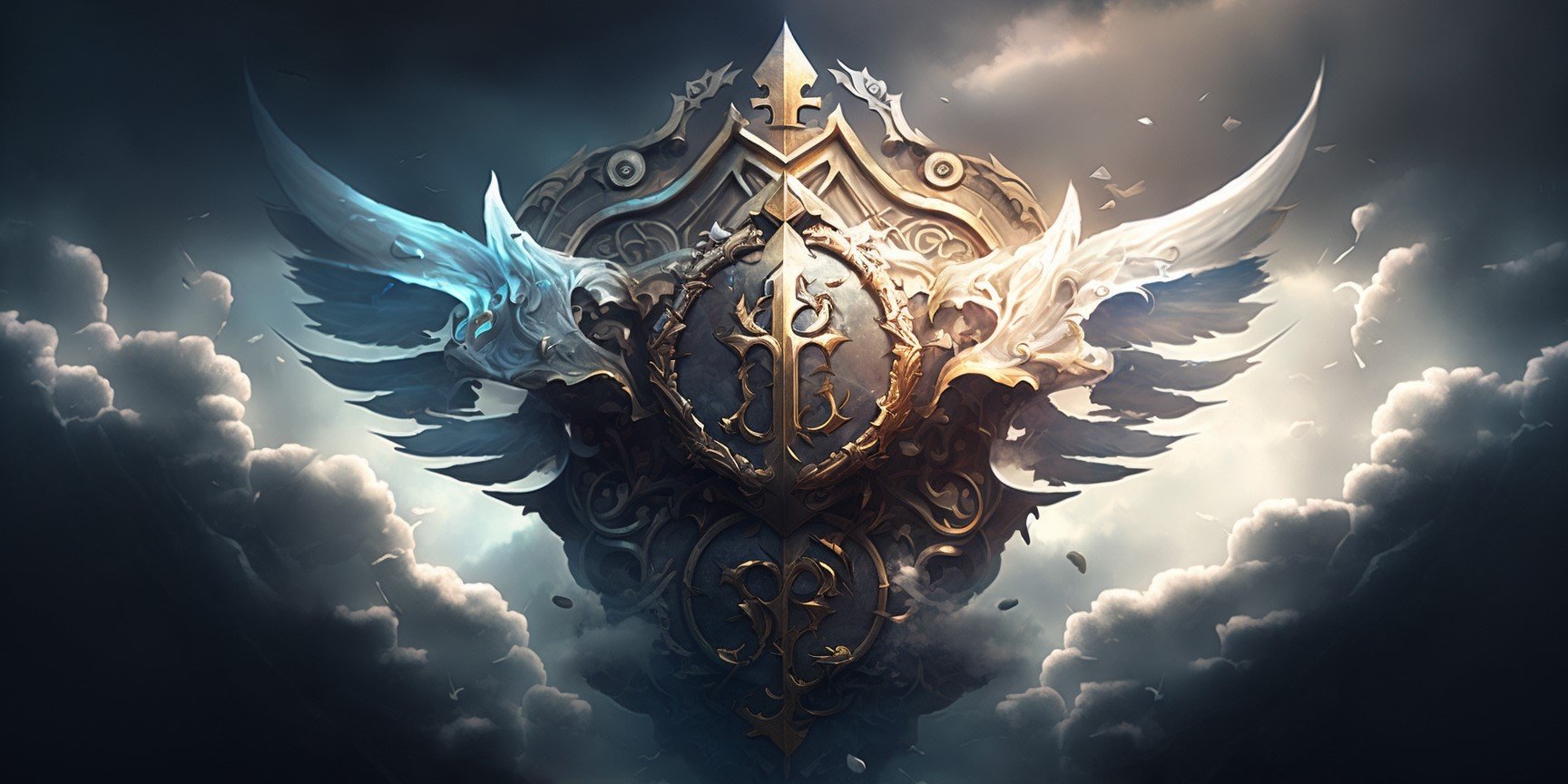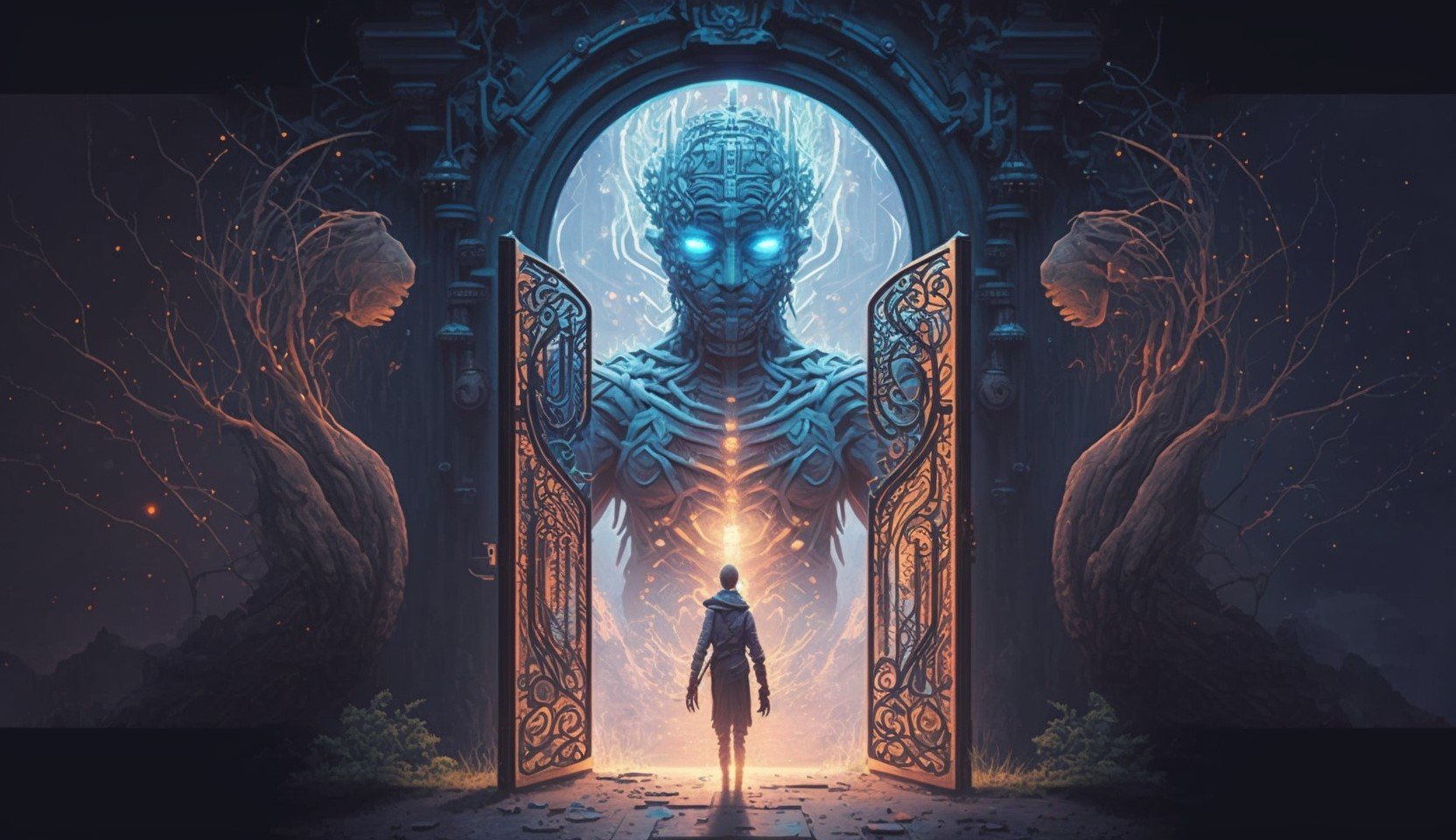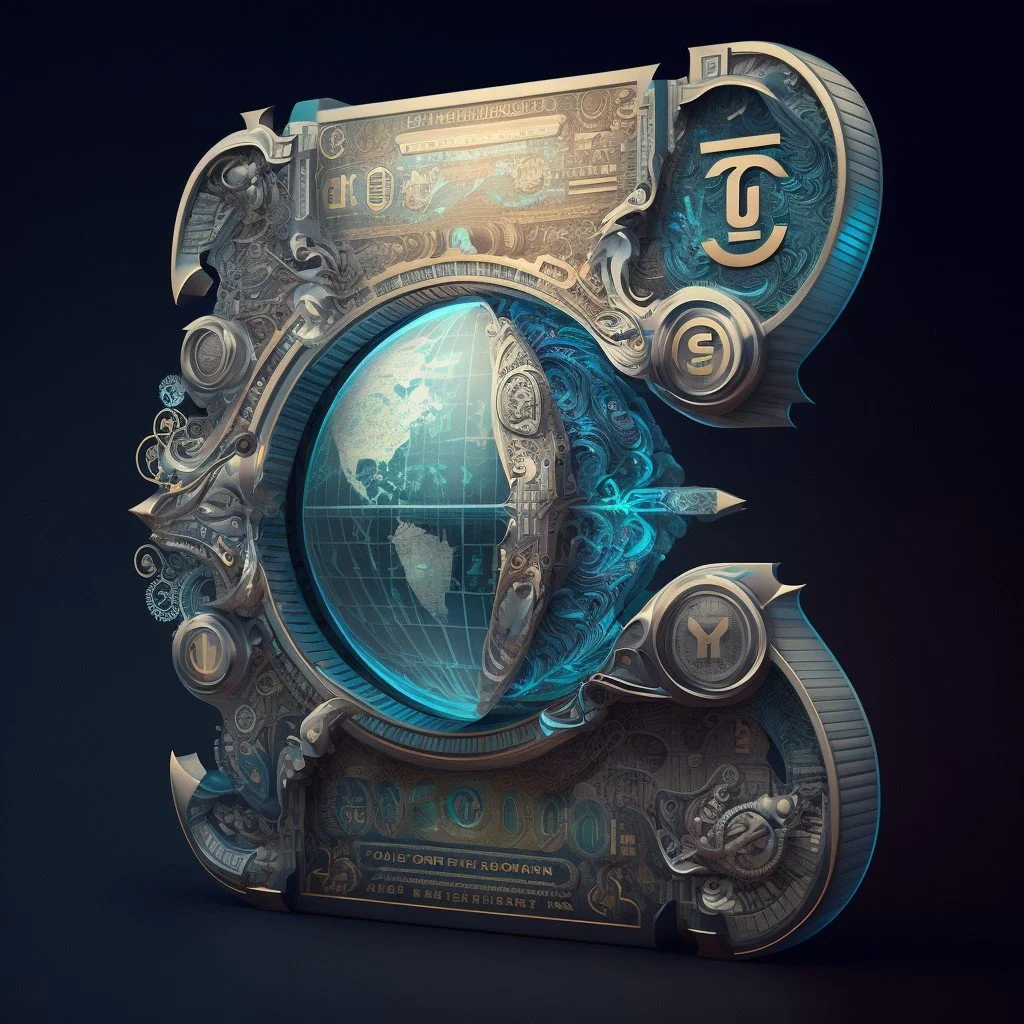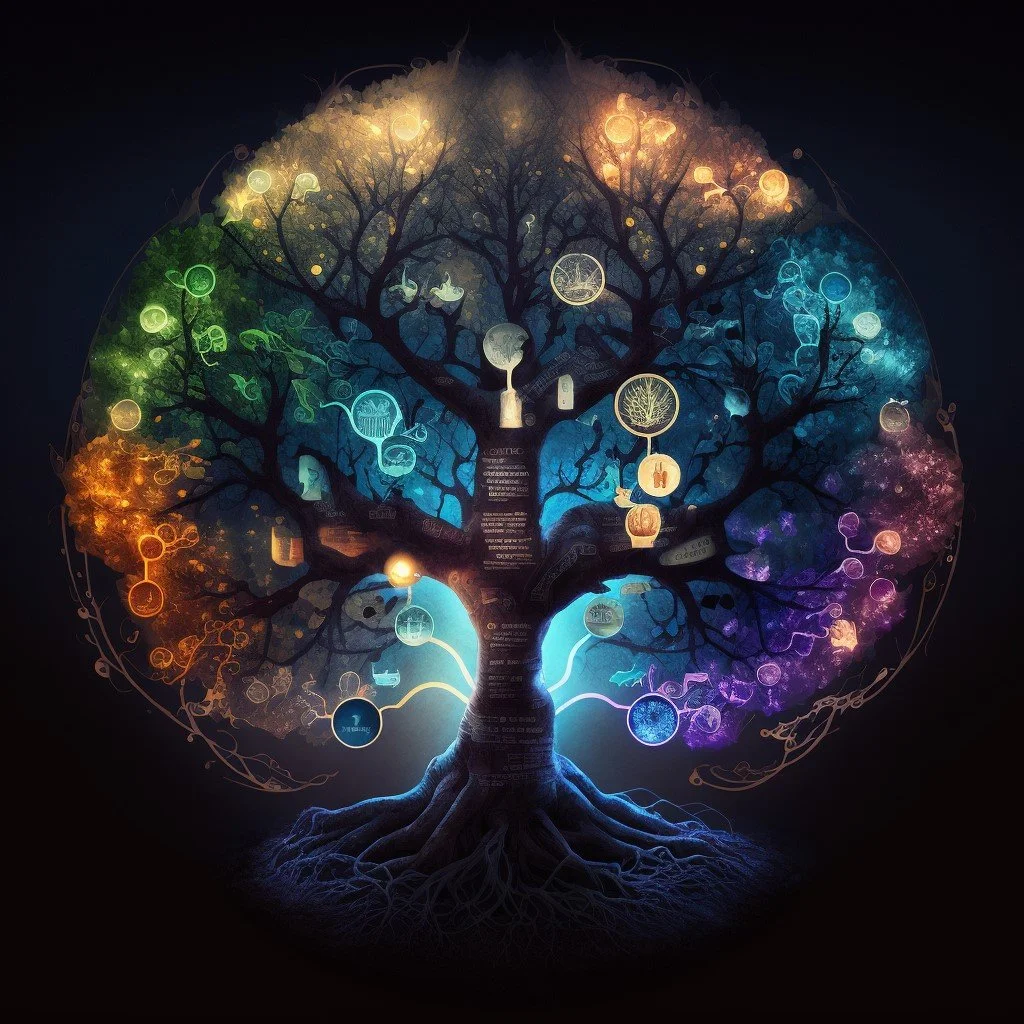Alternative Global Education System (AGES)
Mission Statement:
A new hub for worldwide education that connects all online education systems together into one easily accessible interconnected platform and interactive learning program.
Core principles of the AGES:
Openness
Free for all students - how wealthy or poor any individual student is should never affect their level of access to any limited resources within the system, only their level of passion or excellence should matter. To the extent to which the system would have necessary expenses, it should be paid for from a combination of sources like the UN, national governments, corporate scholarships, private donations, or some kind of global universal income or dividend scheme (see the GPIB page for details on that). Initially, the expenses will only involve costs of developing and running the project website. Eventually, salaries for teachers and similar professionals should become the main type of expense, and to an extent a limited resource (mainly their personal attention). Some information may need to be purchased as well, but all information within the system must be treated as open source, making it effectively unlimited.
Global - it must be easy for any user with any national, ethnic, or cultural background to create a profile and access all the project’s content from anywhere in the world. While we cannot control whether any countries decide to prohibit their citizens from accessing our service, we can endeavor to make the service user-friendly, including optimization of the service for performance (so that expensive hardware isn’t required to run it) and localization into as many different languages as possible. This would mean translation of the interface and all learning materials. Failing that, all audiovisual learning content should at least be subtitled in a number of popular world languages, while all written learning materials should have at least their synopses translated into the same languages. This is likely to be an ongoing effort, partially done by volunteers and partially by paid contractors, assuming these types of tasks won’t be entirely automated using artificial intelligence in the future. Which translation work will be paid at any given time will depend on a rational system of prioritization and overall budget.
Without age restrictions - we believe that to achieve the greatest possible benefit to society, continuous learning throughout one’s life should be encouraged. People also age mentally at different rates. For these reasons, students won’t be grouped together or their learning access limited based on their biological age. The ongoing march of technological progress often makes some form of requalification later in life necessary anyway, in those economic and political systems where productive work is required for survival. Pushing people to study only while they’re young also appears to be interfering with their ability to start families within the optimal biological window. Making it possible for people to decide to enroll in any type of study program for free at any point in their life is by itself likely to be a personally lifesaving change with significant rippling benefits for the global community and economy as a whole.
Self-paced - one of the less obvious ways in which old-school educational systems tend to be exclusionary is the idea that every student needs to progress at the same rate and finish a study program within the same timeframe. This is often coupled with substantial financial penalties for not being able to meet 100% of the program’s requirements in time, which means that one arbitrary or capricious rule, circumstance, teacher, or bureaucrat can cost a student dearly, or even prevent them from completing the program altogether. This is bureaucracy for the sake of bureaucracy at its worst. As we now do have computers and the internet, it’s no problem to track and pace any student’s progress in real time dynamically, enable them to pause and resume studying or change direction at will, and otherwise keep adapting the program to the student’s optimal rate of progress. As the students in a global network will not be bound to a single class with a fixed set of teachers on a fixed daily schedule, Kafkaesque levels of bureaucratic masochism would be the only reason left for preventing self-paced learning.
Collaboration
Promoting teamwork - most existing academic systems are built around the concept of individual excellence, which is a desirable goal, but one arguably best achieved by letting students help each other and be helped by each other, or in other words, through teamwork. Cooperation at achieving goals is essential in everyday life, in order to take the maximum advantage of everyone’s strengths, while allowing people to compensate for each other’s shortcomings. This natural, efficient process is typically seen as cheating and is punished at school, due to the requirement that every student needs to be equally excellent at all of the aspects of any given study program and must be able to prove it in isolation. There certainly are some fields or skills that require a high degree of individual self-reliance, which will have their learning and certification programs customized accordingly, but most of the learning will happen in small, self-selected groups of students mentoring each other, which will in many cases take tests as teams. The students will also be tested as members of the global community, meaning they will have access to any resources while passing a test by themselves to which they would have access in the real world while doing real work in the field.
Integrated - the first stage of the project will essentially be a website with the purpose of aggregating all of the globally available online learning resources that are freely accessible or generally affordable. Gradually, an interactive system of dynamic learning paths will be created that will integrate the available learning platforms and their particular classes, study programs, and certifications into one educational system. However, the goal of this integration is not to standardize or centralize learning, to control the curriculum; the goal is to maximize synergies between otherwise disparate programs, to serve as a learning potential multiplier. Since many learning paths will include courses, resources, or tests from multiple different platforms, the students won’t miss any of the best educational content, and no single platform will have to be perfect at everything. In other words, integration of platforms has the same benefits and makes the same sense as teamwork of individual students in the educational context.
Customizable - most official academic systems and programs in the world are highly centralized and standardized. This has historically been the case primarily because this way, government or school administrations can have ideological control over the curriculum. This is indoctrination, which is antithetical to the primary objective of this project, which is the maximization of the potential of both individual human beings and the global community. One may argue that indoctrination is no longer the primary reason for standardized curricula in the developed world, but the other possible reasons for it arguably also don’t stand up to scrutiny. Centralization and standardization are sometimes implemented for reasons of economic or organizational efficiency or convenience, but computer science has made such administrative concerns obsolete. Alternatively, the most recent pushes for academic standardization were motivated by IQ research (to pick students with the highest innate intelligence) and by making it possible to compare the quality of teachers or schools within a system. Regarding IQ, this project is aiming for universal free education, so that the naturally disadvantaged aren’t further systemically disadvantaged. Regarding the issue of standardized testing as a basis for comparison, this has proven in practice to create hostility between teachers and students and between schools, while we believe that promoting collaboration is desirable; it creates a stressful, psychologically unhealthy environment; and the content of tests becomes the sole focus of learning, if the test results in any way matter to the careers of the people involved, which restrains the potential of learning. Standardization also presupposes that all learning outcomes can be measured and compared objectively, which simply doesn’t appear to be the case in any of the humanities or arts in any meaningful way. For all of these reasons, we believe that a more effective educational system is one in which students are allowed to follow divergent learning paths, dynamically customized based on the individual student’s preferences, specific progress and goals, and unique experiences.
Evolving - one of the main problems of traditional academic systems is that as long as a study program’s content is locked in for its whole duration, the program may become obsolete before the students finish it. Students then receive degrees that are already outdated and don’t actually qualify them for any real-world job. This is most pronounced in certain high-tech fields, particularly in anything to do with computers, but the pace at which technologies are evolving in the current age is so rapid that who knows how much will change in any given four or five-year period. Not having fixed-duration programs is one part of the solution, as is the ability of students to course-correct on their learning paths at any time, but ultimately, all of the learning content and learning pathways need to be adapting to the changing situation in real time. Thankfully, the same technologies that are driving the change, like networking or automation, enable us to keep up with it. Whether through cooperation of human beings or with the help of AI, or most likely through cooperation between humans and AIs, the learning content and pathways will be continuously updated, while keeping track of the whole history of previous versions.
Respect
Constructive - any online global platform where interaction of users is common is effectively a social medium, which means there needs to be a clearly formulated policy of how these interactions should be structured and managed. The primary social policy of this project is to ensure that all interactions of all associated parties are respectful. Active hate speech or overly partisan or conspiratorial communications will be discouraged proportionally to their level of extremism. However, in order to help the students effectively address hateful and political speech in their everyday lives, it is important that learning about these topics in the context of philosophy, science, and history is allowed without any form of censorship. Among all of the existing speech moderation standards, the one most applicable to this project are debate competition rules, or ethical codexes of debating organizations. Put simply, the ideal standard is constructive free speech, meaning that it is desirable to limit all kinds of speech that aim to make objective, fair, and honest discourse more difficult or impossible. This is meant to cover mainly fraud, bullying, pornography, sexism, xenophobia, religious fundamentalism, and ideological zealotry, not opinions that are merely controversial. Students will be encouraged to debate controversies, only in a respectful manner.
Mediated - given that free speech will not be absolute on our platform, some human moderators or AI-enhanced algorithms will need to keep determining and enforcing the limitations. It is also likely that there will be complaints and disputes regarding student or teacher conduct, accuracy or morality of learning content, and outcomes of various tests or assessments. This is something that all existing social media platforms have always struggled with, especially at scale. While there may be no perfect solutions, we intend to learn from their successes and mistakes. For starters, there have to be humans involved in resolving disputes, not just an impersonal algorithm, and any algorithm used has to be transparent and responsive to the preferences of the community which it polices. In terms of assessing the quality or appropriateness of educational content or communications, we intend to create another organization fully dedicated to that kind of work (see the Truthworks page for details). Complaints and disputes unrelated to the learning content will initially be addressed by an algorithm optimized by the community, except for extreme cases and appealed cases, where dedicated moderators will have the final say. AGES moderators will be volunteers or paid professionals who passed an equivalent of existing debate adjudicator certifications. Moderators will have to follow set guidelines (also optimized by the community) in making their decisions. Users will not be able to appeal moderator decisions, but can lodge complaints against moderators. Based on this feedback, it will be up to the moderator community as a whole or internal investigations-focused truth workers to determine if any particular moderator’s status should be revoked.
Professional - in terms of determining certification standards wherever that may be applicable, we intend to coordinate with existing corporations and educational institutions and respect their judgment and needs. We do not intend to be an authority on setting professional or academic standards. While the primary concern of this initiative is to foster personal growth, not to meet the demands of any particular government or industry, the ultimate choice of educational priorities will lie with each individual student. To ensure maximum usefulness of our platform for all students who seek to improve their position on the job market or achieve specific career goals, we will strive to create learning paths designed to help students meet a broad range of academic, professional, or industry qualifications. One of the key functionalities of each account on our platform will therefore be an optionally detailed or transparent student profile capable of displaying complex analytic information about the given student’s learning progress and acquired qualifications. In other words, a very advanced accurate CV to help recruiters determine whether the student is a good fit for any given organization. If the student doesn’t opt in, their information will not be displayed or used by us for analytical purposes.
Honest - one of the biggest challenges of any educational program, but especially one that aims to be global, is managing to remain as truth-based as possible in a world full of ideological biases. Most education systems tend to have some kind of national bias resulting in a skewed historical account and a set of preferred political ideas, often right-leaning. In response to this common conservative tendency of lower-level schooling, most high-profile independent universities tend to have left-leaning politics. While the main political issues in education on both the left and the right side of the political spectrum keep evolving over time and differ across the world, they always result in some objectively detrimental pressures on education - to teach convenient untruths; to not teach inconvenient truths; to sabotage the effectiveness of education; and to control who gets to have an education at all. If you turn these negatives around, you’ll get the political agenda or bias of our project - objectivity, meaning facilitation of universal access to maximally effective ways of learning true facts, real skills, and honest philosophy. This may result in our platform being censored, boycotted, or otherwise opposed by those governments, institutions, and private groups that wish to misrepresent facts to make themselves look better or make a profit; that are opposed to effective or universal education on principle; or that wish to be the sole authorities on what objective truth is. While our truth workers will be always willing to engage our opponents in a good-faith debate and moderate our content within reason, intellectual honesty is a central pillar of true learning that must not be compromised.
Gamification
Interactive - passivity is one of the main attributes of learning through instruction or reading, or the staples of the standard education model. This is somehow still the case despite the longstanding consensus of researchers in the field that the key to make education more effective is making it more engaging. The most engaging form of learning are games, thanks to their inherent interactivity, which is why gamification should be applied to its fullest educational potential on our platform. What that means is that while all of the passive means of learning (lectures, videos, textbooks, etc.) will still be present as learning materials, the way in which students will be supposed to engage with them needs to be transformed. The main source of inspiration should be the most successful games that structurally most closely resemble global instructional systems - MMORPGs, or massive multiplayer online role-playing games. These types of systems are so engaging even when their content is effectively pointless (limited to so-called grinding), that millions of both children and adults are willing to spend money on them. Making a similar system with meaningful content that would level up the user in the real world and enable them to make a living is likely to make it more engaging, not less. What this type of gamification would mean on the level of principle is that learning paths would be presented as branches of a character skill tree, meaning that students would be trying to become a class with the help of their party, navigating together a series of challenges appropriate to their level, as opposed to sitting through classes with no agency.
Playful - beyond the overarching structural gamification of the whole education system, students should also be encouraged to learn through directly participating in games, including computer games, debating, scientific, or artistic competitions, physical and intellectual sports, and more. This could mean playing games, hosting games, adjudicating games, making games, inventing games, the list of potentially educational game-related activities is endless. Students likely won’t need to be convinced to get involved in these types of activities, so the real challenge for us is to find the best ways of maximizing the educational potential of this involvement. We should strive to identify which games and related activities are more directly educational than others and put emphasis on them as part of our learning paths proportionally to their educational potential. It should be made clear to students which skills they can learn how through which games, as well as how to identify and avoid problematic elements of games. This means we will develop our own game rating system that transcends one particular genre of games, meaning that one will be able to compare within it for example chess to soccer to League of Legends in terms of associated learning benefits as well as any risks or downsides.
Coopetitive - for any games with both high educational value and a competitive aspect, there should be additional incentives or rewards in the form of achievement badges, prizes, scholarships, or special privileges for those students who prove their dedication or excellence by beating high scores or winning competitions. This has to be done thoughtfully, however, as collaboration should still be more pronounced than competition within our education system overall. In a word, an optimal educational environment to aim for is therefore one that is coopetitive, or one of friendly rivalry and of competing at helping others. This means that whenever applicable, there should be competitions between teams and collective rewards, as well as a lot of emphasis put on cooperative, win-win games. This isn’t a trivial task, it will require careful balancing of an evolving situation, but ultimately, what should be avoided is a cult of arrogant elitism; winner worship; humiliation of losers; warring tribes mentality; or giving prizes to everyone regardless of achievement. In short, rewards need to reflect actual achievement, but winning them shouldn’t be presented as valuable in and of itself.
Aesthetic - given that most game developers aren’t trying to teach real-world information or skills through their games, and given that many successful games don’t contain any story, it is likely that the aesthetic (beautiful, artful) components of games account for a large part of their appeal. Unfortunately, within the standard education model, aesthetics are generally considered to be unnecessary, which typically results in a wholly unappealing presentation of information at school, as well as in it not being properly taught. Within the context of computer games or online education, this mainly concerns graphic design, music and sound design, and stylistic aspects of writing or voice acting. Since better aesthetics in games (or higher production values) demonstrably result in attracting more players and higher player enjoyment and retention, aesthetics are in fact not unnecessary, they’re functional. As the goal of our project is the maximization of educational potential, the best possible use of aesthetics must be pursued. The user interface of the platform needs to be as visually appealing and easy to navigate as possible; animation, soundtrack, or dubbing should be used to enhance audiovisual learning materials; teachers should be rewarded not just for their level of expertise, but also for the quality of their performance; and finally, no less emphasis should be put on the development of artistic skills than that of any other type of skills.
Learning Hub Design Principles
The Tree of Knowledge
Our platform will serve as a learning hub and visual interface, so on the most basic level, it will be a tree diagram. One can think of it as a living tree, with qualifications for various types of careers or achievements being fruits that can be attained by following through various paths from the roots (basic capacities), through the trunk (core subjects) and large branches (secondary education), to various progressively more specialized smaller branches.
Although, its design won’t be based on just any tree - the primary source of inspiration will be the mythical Yggdrasil, or the Worldtree from Norse mythology. Given the specific function of this tree diagram, it’s likely there will also be some symbolic resonance with the mythologies of the Tree of Life or the Tree of Knowledge.
There are a number of practical reasons for growing an educational interface out of mythological roots. On a general level, mythology as a genre or style is compelling because it works with classical, universally shared archetypes of human psyche. A tree diagram that’s just a tree diagram, devoid of any stylization or story, is less appealing, intuitive, and memorable. Myths tend to last for millennia, while modern instructional systems will be lucky to last for decades.
Such layer of mythology is a big part of the success of the fantasy genre as a whole in the modern era, as well as a big part of the success of its videogame iteration. Modernity and technology can be quite disenchanting, so if one wants to make a modern technological system more inspiring to people with ancient brains who are forced to live in a modern world, a little bit of ancient magic may be what’s needed.
After all, what are the preferred ways of spending free time of the modern youth? Playing games set in or otherwise enjoying worlds of speculative fiction. Or, in other words, immersing themselves in fantasy and science fiction. If you want evidence, consider that the most popular fictional property of the last several decades are the Harry Potter books, which are about going to a fantasy version of school. There’s every indication that re-enchantment is the way to go.
Beyond bringing magic back to education (without compromising any fundamental principles of science), the Worldtree metaphor also works on the level of direct functionality. As the name implies, the Worldtree connects different worlds, or realms. If done correctly, a worldtree diagram can contextualize for each student an otherwise disconnected patchwork of different educational systems of classification, progression, or certification.
The specific terminology used as part of this metaphor need not be literally taken from the Norse mythology or any other preexisting mythology, but the interface should feel like a map. Every distinct “realm” of education connected by our worldtree diagram should feel like a place, have an evocative, descriptive name. Not just a meaningless abbreviation or some other kind of bureaucratic descriptor. There should also be a natural way to give directions to it.
It probably won’t be possible to use literal geographic directions like north, south, east, or west, but there are other ways to intuitively describe topology. There could be concepts of above or below, before or after, or running in parallel, giving specific meaning to the diagram’s structure of roots and branches. “Direction” really is the key word here, or “vector” or “trajectory” in more technical terminology. Students need to know where they’re going.
The closest “instructional” system in existence to this arrangement are MMORPGs, or massive multiplayer role-playing games. The original and most common genre of which is fantasy. The players in these games control characters or avatars that navigate not only physical-looking space within the game’s world, but also a character tree in order to “level up”. The players can often select their starting “class” and then chart their own path at their own pace.
If you simply choose to think of “players” as “students” in this model, and substitute real-world knowledge or skills for the fictional lore and simulated skills, you already have a functional educational system. The fluid interpretation of “class” between the traditional educational meaning and the traditional fantasy RPG meaning is particularly intriguing, if you think about it. “Class” as both a group of peers and the kind of person one wants to become makes a lot of sense.
Using a computer game system as a template for an educational system also shows that there is no need for the system to be rigid. Within computer games or computer systems in general, it has been the norm for quite a while to customize all interactions for each user on an individual basis. Each student’s version of the worldtree diagram can be unique, adapted to best suit their personal needs and preferences.
Of course, in any logical system of education, some parts of learning paths have to follow in a given sequence or can be mutually exclusive at times, that’s no different than how fantasy MMORPGs work. More advanced skills have prerequisites, some areas aren’t accessible at the beginning, and some specializations can’t be combined with other specializations. Still, MMORPG games typically don’t devolve into chaos, and most players can figure it out.
As most young people today are already familiar with RPG or MMORPG concepts and interfaces, the learning curve toward mastering our specific version of such a system should be quite manageable. There’s still a lot of debate to be had about the details, and we will get to that in a moment, but ultimately, the students will be expected to do the following:
Register into our system
Orient themselves within the worldtree diagram
Select a class, meaning both a primary group of peers and a cluster of learning pathways
Level up by progressing through the learning pathways
Choose how to display their accomplishments
The debatable details mainly revolve around the precise structuring of both socialization and progression within the system. As with every other aspect of the system, inspiration should ideally be sought in effective mythology. For example, while “leveling up” is an established concept in gaming, perhaps there could be a more compelling way to think about one’s progression in life, one that’s less likely to involve “grinding”.
At its worst, gaming can get just as meaningless and repetitive, and therefore demotivating, as any modern instructional system. Within archetypal fantasy and mythology, the core driving idea is the quest. In fantasy RPGs, leveling up should be secondary to accomplishing quests. Quests also must not be pointless quests for the sake of questing, they need to involve an actual journey, character arc, or true seeking.
To serve as a framework for true questing, the worldtree system must be able to interact with the students in ways more substantial than “number go up”. The primary objectives arguably shouldn’t be presented in terms like getting to a higher level or doing actions a set number of times. They should be framed more meaningfully, more archetypally, as mysteries to solve, people in need of help, enemies to defeat, realms to save, and so on. This will require good writing.
As for the ideal framework for student socialization, there’s something to be said for the appeal of gaming guilds, or something like the student houses in the Harry Potter universe. While the specifics of how the students at Hogwarts are sorted into houses may be questionable, choosing one’s archetypal purpose in life (for which they feel they were fated) is a fairly powerful aspect of most hero’s journeys in most classical mythologies.
In fact, making the student guilds or houses purposely fictional may be a major positive feature. There’s a case to be made that if the Harry Potter houses were real, they would in fact be terrible, but since they are fictional, they do inspire both a sense of belonging and competitiveness that’s likely to lead to real benefits, but not to real harms. Mythologies can get out of hand if they’re taken absolutely seriously, but modern fantasy has just enough distance from reality.
Within our system, we could decide to offer our own specific, original mythology, our own structure of quests or guilds (or in other words, purpose), or we could enable the students to adapt any preexisting mythologies for their own purposes, or we could do both. This may involve some practical copyright issues, so perhaps it’s more of a legal question than anything else, but some archetypal framework of giving greater purpose to learning will be required.
Overall, the main piece of archetypal mythological wisdom to keep in mind while building a worldtree of knowledge is that magic is primarily defined as the ability to affect the world at will. Any educational system that has the empowerment of students as its primary objective therefore is fundamentally magical, as opposed to any educational system that instead aims to mold the students to fit the needs of the “real” world. Let’s make the students the heroes of their own story.
Elemental School System
Following the mythological inspiration for our system even further, there is a more intuitive and philosophically deeper way to conceptualize learning paths. Instead of elementary school, we propose an elemental one. Elements in this case mean the classical four ancient Greek elements of fire, water, air, and earth, which can help the students track and filter various learning options.
In modern times, the main models of what the school is for and how it should be run are the factory model and the organic model. In the factory model, students are prepared for careers or otherwise indoctrinated to meet predefined societal goals and quotas, while in the organic model, the students are given the resources they need to pursue whatever learning they feel best serves their personal growth.
The main problems with these conceptualizations are that the former model doesn’t give much freedom of choice or internal motivation to the students, while the latter model doesn’t give them much guidance or ensure any socially beneficial outcomes at scale. But both contain some truth - societies do have quotas to meet to keep functioning, while the students can only maximize their potential if they’re driven by internal motivation.
Making the system responsive to the needs and wants of both the students and their society is possible in the many ways described in other parts of this charter, but merely enabling that isn’t the same thing as ensuring that. In many educational systems around the world, better educational outcomes are allowed and possible than are actually achieved.
The problems to solve here are those of guidance and motivation, and that’s where the elements come in. The philosophical elements are not just the physical substances of literal fire, water, air, and earth, although those do work as direct symbolisms on many levels. Philosophical elements are also psychological and abstract principles that divide reality into distinct realms of meaning.
The houses in the Harry Potter series already are a version or example of this in the context of education. Gryffindor is the house of fire, Slytherin is the house of water, Ravenclaw is the house of air, and Hufflepuff is the house of earth. On the superficial level, this affects the choice of house colors and mascots, but the metaphor has deeper, psychologically, socially, and educationally functional levels.
Here are some specific functional examples. Ravenclaw as the house of air is for the smartest (most intellectually-focused) students, as the element of air is the one of intellect. Gryffindor students are the most brave and competitive, as those are the main qualities of fiery personalities. The main subject at which the Hufflepuff students excel is herbology, because growing things is the primary earth skill.
Slytherin is perhaps portrayed as a bit too evil, but that’s because it’s based more specifically on the water sign of scorpio from western astrology than the water element as a whole, and it’s supposed to serve a story function. In a real school system which has an unbiased elemental system of classification, the water house would likely focus on subjects like art, psychology, criminology, and other fields related to emotionality, introspection, or intuition.
Put simply, philosophical elements are complex metaphors that can be applied easily across different subjects or domains, while remaining intuitive to understand and internally consistent. You can literally describe the behavior of a flame, for example by saying that if it burns twice as bright, it burns for half as long, and the statement will describe equally well the career of an artist and the lifespan of an actual star.
In modern science and education systems, the standard approach is to stick to limited precise descriptive statements, but that’s at best a double-edged approach. You only say exactly what you mean, but leave out all kinds of important contexts or implications. The elemental philosophical perspective, or similar mythological storytelling modes like zen koans, say more than just what they appear to say on the surface level. They can contain more wisdom than their authors had.
In the context of education, if the student has a fiery temperament for example, then showing them what can be learned through the lens of fiery philosophy, with all the associated myths and symbolisms, is more likely to make it clear to them why they should be learning anything in particular. Within this framework, nothing is just information, or just a future paycheck. Everything has personal meaning.
Every element, and by extension a type of personality, has specific reasons why to learn, different kinds of experiences it favors or dislikes, different preferred modes of socialization, and different ideal self-image. If the students are allowed to self-identify along these lines as they interact with such a system, then the system will know how to motivate them to maximize their potential and fulfil a needed role that best fits their personality.
Fire - Personal growth. The specific content of such learning should be highly voluntary and personalized, but will likely often involve the mastering of fundamental human capacities like languages, mathematics, or creative arts. There should also be a distinct competitive, playful, fun aspect to this path.
Water - Finding a way to belong. The primary fields of interest here should be social studies and performative arts, particularly music, but there should also be a big emphasis on all forms of social service, including especially healthcare, as well as on helping young people navigate romance and family.
Air - Expansion of the mind. This should include mainly the humanities, theoretical science, philosophy, critical thinking, and similar subjects. Training in rhetoric or law should be an important aspect of this path, in order to prepare the students to meet their civic responsibilities.
Earth - Development of valuable skills. This will mostly involve specific career or business training, physical arts, and applied sciences. Basic financial and more advanced economic education should be important aspects of this path, as well as stipends and other tangible incentives for those with the most skill or motivation.
Beyond these four fundamental elements, more elements can be introduced to further subdivide or specialize learning modes or paths. For example, if one thinks of the fire element as more broadly energy or plasma, different forms of energy can be used to denote different subtypes of fiery personalities. The path of lightning or the path of light are some of the more immediately evocative options here, for the students interested in following the example of Tesla, or a religious prophet of their choice, respectively.
One can also think of combinations of or borderline areas between the primary elements. For example, on the border between water and air domains, one can think of an ice domain, while on the border of fire and earth, one can think of a domain of lava. The specifics of these extensions to the model can differ, and the extensions should only be created if there is a need, but in this way, the elemental model has a lot of room for meaningful and intuitive expansion.
There can also be a further subdivision added to the elemental model in combination with some other kind of typology. This is how astrological signs were derived, after all, by combining the four elements with the three so-called qualities that can be described as a leading personality, an enduring personality, and an adaptive personality. Upgrades like this should ideally be rooted in solid social science and psychology research, but are definitely an option in principle.
Overall, however, any elemental educational lens or system needs to maintain the fundamental equality of all of the elements. In classical elemental philosophy, no element is superior or inferior, all are equally fundamental and necessary. Translated into educational tracks, skills or professions aren’t made objectively any better or more vital just because they require higher IQ or result in a higher pay.
As the recent crises have shown us, the currently underpaid people who grow, cook, and serve food, transport supplies, maintain utilities, or perform similar tasks are in fact essential workers, just like nurses or teachers, or ultimately any of the professions that keep civilization going. At the same time, there are good reasons why the currently highly paid professions are highly paid.
Not only is there no justification to underemphasize any type of learning path in an elemental education system, they’re also never underappreciated or looked down upon. There may be a distinction between more general and more specialized elements, or broader or narrower categories (like lightning or light elements being subcategories of fire), but there’s no difference in how essential or dignified any of them are.
The real world may still decide to value different jobs differently in terms of financial compensation in the end, within the logic of the earth element, but the students can literally choose to see the world differently, through the lens of different values and priorities. Each elemental track should have its own type of rewards, its own measures of success, and its own organizational logic and privileges.
Currently, the earth logic of profit is dominating all other domains of learning in most parts of the world, and it is arguably this fundamental imbalance that’s the cause of many bad outcomes. Put in the most simple terms, fire is about sportsmanship, not profit; water is about community, not profit; and air is about truth, not profit. Profit-only-based education is necessarily inappropriate to harmful for 3/4 of any randomly selected student population.
Any society that underdevelops the potential of any of the four elements (fundamental types of personality and meaning of life) risks being dysfunctional in one or more core areas or dimensions. Without fire, there will be no exceptional leaders or fun to be had; without water, fewer people will be born and more will suffer and die needlessly; without air, science and society will stagnate and rule of law will be in peril; and without earth, poverty will be the fate for all but a few.
An elemental system aims to be complete and unbiased. It aims to develop every type of personality to its fullest potential. It aims to maximize all personally and socially beneficial and desirable outcomes. It can also do so by providing any student with a story that will make them a hero on their own journey toward the best version of whatever it is that they innately value the most. We have already figured this out, we have just forgotten. Now, we need to unfix what wasn’t broken in the first place.
AI Learning Guides and NPCs
Following the recent developments in the field of artificial intelligence, particularly in text and image or animation generation, it is becoming clear that some version of an artificial teacher or learning aid is coming in the near future. But even if it wasn’t, it makes sense to take further inspiration from games like MMORPGs and incorporate some sort of tutorial into the system, ideally presented through a character. Character that can be customized to fit the preferences and needs of each student.
In science fiction, there’s a lot of precedent for generalized AI assistants who are characters with personalities, like Cortana from the Halo universe. The specific type of program that we’re aiming for could perhaps better be described as a VI assistant, or “virtual intelligence” by the definition from the Mass Effect universe. Not a true, independent or general AI, but instead more of a personalized interactive interface of a standard program, at most enhanced through machine learning.
The more advanced the programming of such guide character, the more it can function as an actual teacher, but even the least artificially intelligent version of such a program can help the student orient themselves within the system. The nature of the guide character should match the elemental fantasy theme selected by the student. Looking again at the example of Harry Potter, each of the houses has their own head teacher, ghost, or founder, for example, who would be good guides.
The advancement of the technology is the only limit here in terms of how many different guides could be created or to what degree they would be customizable. Although writing at least four distinct characters to start with should always be feasible. The more advanced the AI, the more varied and responsive they could be, but it is important for their behavior to be predictable, so whatever level of the technology that can actually be controlled is the one that should be used.
After all, you wouldn’t want the AI guide to suddenly go off script and emotionally extort or threaten the student, or start swearing or spouting xenophobic opinions. More commonly, AI chat bots used in the place of search engines can confidently lie or be mistaken, which isn’t exactly ideal for the purposes of learning. Then again, if the guides or similar characters were clearly presented as fallible, unreliable narrators or flawed personalities, not any better than real people, there could still be some good educational value to be salvaged even from their worst failures.
There also doesn’t have to be just a single guide character for each student to interact with. In addition to their first or primary guide, there could be a whole party of characters (in the fantasy RPG sense) of which the student (or their avatar) would be the leader. The whole system can also be populated with additional NPCs, the nature of which could also depend on which elemental filter is being used.
Just like in Harry Potter again, there could be a whole “staff” of NPC teachers powered by AI or standard programming. The expectation wouldn’t be that they can replace actual human teachers, they would mainly function as personalized databases of knowledge, exercises, and stories that relate to particular fields. Essentially, they would represent gamified or dramatized textbooks. There would still be actual normal written textbooks, but a gamified alternative would help.
Beyond direct teacher, tutor, or guide NPCs, there could also be a myriad of other NPCs who simply populate (and personify) all the various “realms” of education. These should most definitely include famous real personalities throughout history, saying their famous quotes, telling their stories, commenting on student’s progress, having conversations among themselves, and so on. The AI technologies are definitely already capable of simulating real voices and animating faces and bodies.
There can also be any number of fictional characters taking part in demonstrating any number of things that the students may want to learn. Well, at least those characters that are in the public domain or for which we can get the needed intellectual property rights. This would be a bit like in the fictional educational system presented in Ready Player One, but with some important caveats. For starters, there’s no need to involve virtual reality at all, like the OASIS system.
Locking students inside of isolated virtual reality worlds may not be a good idea. Real-world interaction and socialization should probably always be a part of the educational system. The students will always have to be able to deal with real people being in the same room as them, in order to function as adults in society. However, that’s not to say that immersive virtual reality simulations aren’t a good way to teach some aspects of some subjects, like history or astronomy.
The main important similarity between our proposal and a system like OASIS from Ready Player One is the presence and utilization of all kinds of fictional characters in a gamified setting. Beyond our original core mythological fantasy theme that we would create as an educational default, there’s no reason in principle why the students shouldn’t be able to select a theme or filter from their favorite fictional property or franchise, be it Sherlock Holmes, MCU, or The Lord of the Rings.
This may require obtaining expensive property rights and spending a lot of money and time in additional development, but if there is a sufficient demand and budget, our system could support any number of addons, datadiscs, or DLCs. It may be particularly useful to do a science fiction-themed version of the fantasy interface as the first expansion. The whole point is customization, so the more choice the students have in how they can interact with the educational system, the better.
Modern mythology is still mythology, it retains all the motivational benefits. Even if some modern myths objectively aren’t as developed as those created by ancient classics, what matters most is how well each connects with the individual student. While it makes sense to pick the most universally effective myths as the basis of the default version of the interface, the system would still be made more effective overall if it allows every student to pick whatever works best for them.
It should therefore also be possible to not require the whole system to be filtered in a singular way, assuming there are other options than a shared default. Maybe a given student would prefer to be taught history and philosophy by Plato, but mathematics and physics by Spock, chemistry by Snape, you get the idea. There is no one best way to organize such a system for everyone at the same time. We can suggest settings that generally work well, but we must let each student decide.
One more fictional franchise to take inspiration from is the Ender’s Game series, specifically its concept of Mind Game or Fantasy Game. This is not only a hypothetical computer system that also uses mythology, despite the story being set in a futuristic sci-fi setting, it also represents a different way in which a fantasy game-like environment can be used in the educational context to help students. Put simply, the point of the game is to prevent problems by studying the students.
To be clear, this can be done in an opaque, manipulative way that mainly benefits the people who control the system. It’s therefore important to implement such functionalities transparently and require students’ or at least parents’ consent. With that said, the choices the students make in a psychoanalytical game can help the system better adapt to the needs and preferences of each student or diagnose and help prevent problems, even if the data isn’t directly accessible to human beings.
Some existing games that weren’t explicitly designed for this purpose can also be used to achieve similar ends. There’s nothing preventing doing some social science research to determine whether player choices in popular fantasy or sci-fi RPG games correlate with personality attributes or likelihoods of future behaviors. I’d wager that preferred ways of playing something like Skyrim aren’t entirely unrelated to personal attributes of players. A fantasy or sci-fi RPG game from a school-like universe, like that of Harry Potter, could already be pretty close to the target.
Beyond analytic monitoring, it’s not unheard of in some RPG games to present different ways of selecting one’s class or entry points into a game, including choosing by playing. Especially some games from the Elder Scrolls universe advise the student on which class to choose on the basis of how they played the shared opening of the game, or on the basis of how they answered questions from an in-game character. Some games for example from the Dragon Age universe have alternate beginnings and unique story choices based on race and class choices.
In conclusion, if implemented properly, an educational system populated by NPC guides and other characters that respond to each student’s personality and preferences will not only be the most motivational version of an educational system possible, it will also make it so that entertainment is no longer a distraction from learning, but instead a boon to learning. It will also make education part of lived culture again, as opposed to the weird boring thing from the past that it is today.
Action Plan
Step 1 - Connect with any interested people or groups willing to help with the initiative (Khan Academy, Skillshare, MOOC, online schools, etc.).
Step 2 - Create a website highlighting all the goals and plans and allow people to sign up to volunteer to build some form of prototype hub.
Step 3 - Look for trial courses or career paths to start with that don’t require actual accredited education. Build up more awareness and support over time.
Step 4 - Continuously garner more support from governments, schools, and corporations to add more internationally accredited education options and eventually form a globally funded all-encompassing education system accessible by all.
Step 5 - Save the world by creating a much fairer, more enlightened and empowered society that can get to work solving all the other major problems in the world highlighted in the UN’s 17 Sustainable Development Goals.
7 Global Organizations to Solve the World’s Problems
(The Pillars of Protopia)

